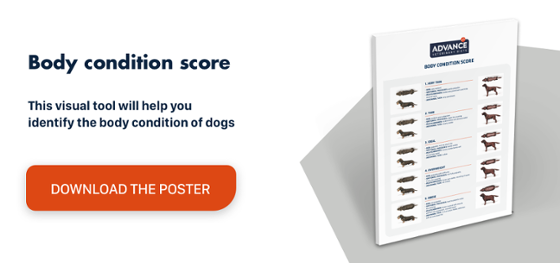Dog and cat foods (“animal feeds”) with hydrolysed protein
The poorly named “animal feeds” with hydrolysed protein are a therapeutic option for pets with a food hypersensitivity.
Introduction
A food hypersensitivity occurs when an animal suffers a specific immune reaction (allergy) to one or more components in the diet. Unlike food intolerance, which is down to a lack of certain enzymes, toxic effects of some foods or a reaction to synthetic ingredients, food hypersensitivity is due to reactions mediated by antibodies, immune complexes or cells, and frequently manifests as dermatoses and/or, to a lesser extent, gastrointestinal alterations.
Proteins are often the main cause of these reactions, which is why pet foods with hydrolysed protein can help us in the treatment of these conditions.
Antigens, allergens and proteins
An antigen is any substance that can stimulate the production of antibodies. Most antigens are proteins.An allergen is a type of antigen that can also bind specifically to the IgE antibodies found on the surface of mast cells. This induces degranulation, thereby releasing mediators that are responsible for the cutaneous clinical signs of allergy.
This is known as a type I immediate hypersensitivity reaction and considered the primary cause of most allergies. However, other non-IgE-mediated responses may also be involved in hypersensitivity reactions (type II, III and IV).
Hydrolysed proteins: what are they and how are they produced?
Although proteins are the main source of antigens, only some of them are allergenic. To induce mast cell activation and degranulation, the proteins must be in the right size range, namely 0.97 to 1.4 kDa for cats and dogs, although the exact values are still under discussion.
Hydrolysed proteins are low-molecular-weight peptides produced by the hydrolysis of intact proteins using specific proteolytic enzymes. The reduced molecular weight of hydrolysed proteins stops them from binding to IgE antibodies and, in turn, the hypersensitivity reaction.
The composition of the resulting hydrolysate depends on the composition of the source protein, the enzymes used and the type of hydrolysis process. Additionally, further ultrafiltration removes larger residues to yield in a higher quality product, albeit more expensive.
Although heat treatment can decrease antigenicity, it is only possible with the most thermolabile proteins. Considering that commercial diets are produced using high temperature processes, yet they still cause allergic reactions, we can assume that a lot of the proteins in the diets are not very thermolabile. In some cases heat treatment may even increase antigenicity by exposing antigenic sequences that were originally encapsulated within the protein’s original three-dimensional structureor by forming new allergens, such as melanoidins, end products of the Maillard reaction. This may explain why home-made elimination diets sometimes yield better results than commercial diets.
Hydrolysed proteins and elimination diets
The dietary management of allergic food reactions is based around the implementation of an elimination diet, which consists of a controlled diet with very few, highly digestible ingredients that are not usually found in commercially available animal feeds.
Although one category of elimination diet involves foods based on novel ingredients (mainly proteins), it can be hard to identify novel protein sources because the animal has already been exposed to a wide variety of ingredients or their dietary history is unclear. Feeds or elimination diets based on hydrolysed proteins are particularly useful in these cases. However, while the diets are more convenient for owners, they also tend to be more expensive. Furthermore, the diet should be based on hydrolysed proteins that do not come from the problematic protein source, as the hydrolysation process does not yet guarantee a total absence of allergens.
Food hypersensitivity strategy
In summary, the strategy for treating a food hypersensitivity consists of three stages:
- Elimination diet. With a gradual introduction and strict adherence for 8–12 weeks. If the clinical signs do not improve, try a different elimination diet.
- Challenge test. The patient should be given the original diet and if the clinical signs return, it confirms the diagnosis.
- Identifying the causal ingredient and maintenance. Gradually add ingredients to the elimination diet to identify the cause. Maintenance should then be based on a diet that does not contain the causal component.
Conclusions
Pet foods with hydrolysed protein are an alternative to elimination diets when treating a food allergy, especially in a context where most commercial diets contain a mixture of proteins, making it hard to find protein sources to which the patient has not been exposed. Although very few studies have been published to date, hydrolysed proteins may also help in the treatment of other gastrointestinal diseases.
Questions
Which foods cause the most allergies in cats and dogs?
The protein sources with the highest incidence of allergy in cats and dogs are beef products, soy and dairy produce, although wheat, pork, chicken, corn, horse, eggs and fish are also known causes of allergy. Unlike in humans, and contrary to popular belief, celiac disease or gluten sensitivity are rare in cats and dogs.
Are only proteins the main allergens in food?
Certain carbohydrates, among other substances, may mediate the development of allergic reactions by acting as haptens (binding molecules) or forming part of glycoproteins. Furthermore, lipophilic protein allergens have also been reported. This means that carbohydrate and lipid sources used in hydrolysed protein diets should be controlled as they do not undergo enzymatic hydrolysis and therefore have allergenic potential.
What are the other benefits of animal foods based on hydrolysed proteins?
Although there is a lack of relevant literature, hydrolysed protein diets are known to be beneficial in the treatment of inflammatory bowel disease (IBD), acute enteritis, exocrine pancreatic insufficiency and may even help sensitised patients recover tolerance. However, more controlled studies are needed to demonstrate these benefits definitively.

